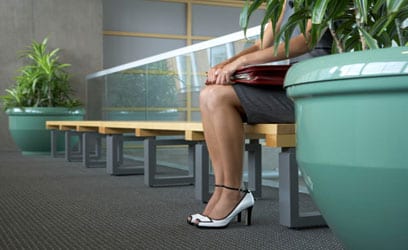When it comes to dressing for work, every impression counts. A Careerbuilder survey suggests that a book is indeed judged by its cover, when it comes to professional attire. How you choose to dress for work plays a significant role in your landing a job, being noticed, getting promoted and achieving professional success. Your clothes and the way you dress reflect your attitude toward your job. In many workplaces and industries, you have to pay attention to the way you look and present yourself, in order for your work to be taken seriously. This article offers tips on dressing for work.
Step 1
Observe how others in your team or your line of work dress. Pay attention to your organization’s dress code. Some industries and organizations stress a more formal dress code than others. In some professions, the trend may lean toward casual or business casuals. Your first task is to determine which category your workplace falls under by taking note of how other successful professionals in the industry dress. Take note of how these professionals dress at job fairs, conferences or in pictures that appear alongside magazine features, interviews and profiles. It is a good idea to keep your attire on the same level as or slightly better than your peers, perhaps resembling that of your immediate supervisor.
Step 2
Invest in a wardrobe that will help you blend in while bringing out your personality. Use the pointers from the previous step as a guide in picking out a wardrobe, but do spend some thought, effort and time in tailoring it to your taste. Choose clothes that are the right size, in colors and styles that suit your personality and which are appropriate for your workplace or nature of work. If you are in sales and need to travel a lot during the day, meeting clients and making presentations, your attire needs to be comfortable and professional. If you work in a back office, handle hardware or do a lot of physical work, then choose clothes that are more durable. Keep your wardrobe updated with the addition of a few basic garments every season—such as a pair of pants or slacks, a skirt, a few blouses and sweaters. Always keep in mind the nature of business and the type of organization you work for when stocking your wardrobe. If it is a more traditional company, dress accordingly. Go with bold shirts, pastels, stripes, neutral colors, button down shirts with collars, blouses with a V neck and dark shoes if your organization is more traditional. If your workplace favors a trendier attire, then you can be more creative. However, ensure your clothes are tasteful and professional, no matter what the dress code.
Step 3
Refresh your wardrobe with accessories. This includes scarves, belts, tasteful jewelry, shoes, purses, coats and jackets that go with your clothes and personality. When accessorizing, remember that accessories should enhance your personality in a subtle manner and not draw too much attention by themselves. A simple necklace, dress pin or pendant, an elegant bracelet and watch, stud earrings and hair clips are some basic accessories you can use with any type of attire. Choose your accessories with care. It may be best to leave long, hanging earrings, flashy belts or other distracting jewelry behind unless they blend with your workplace settings and role. Accessories also help you mix and match outfits and create different looks with a basic collection.
Step 4
Pay attention to detail. Make sure your clothes are clean and wrinkle-free. Polished shoes, manicured nails (or in the case of men, neatly trimmed beard or mustache if you sport one), neatly combed hair are all small but significant details that can make or break your appearance. Wear minimal makeup or go with a bare, scrubbed look. Conceal visible tattoos wherever possible. Remove loose, hanging threads, lint and stains from your clothes. Your professional wardrobe does not have to cost a fortune, nor should you have to spend a lot of time to dress for work. Dressing professionally is all about keeping it simple and tasteful.
Step 5
Experiment with trends, styles and colors that make you look and feel good, while adhering to your organization’s dress code. Dressing for work is not just about how you appear to others but also how comfortable and confident you feel.
Step 6
When in doubt, stick to what feels safer. Even if you have a free hand in dressing for work, it might still be a good idea to lean toward conservative rather than casual on some occasions. For example, your organizations may not enforce rules prohibiting mini skirts, see-through fabrics and low-cut dresses. However, if your intuition tells you that those may not be appropriate for your workplace, then they probably are not. Remember that how you dress for work plays a crucial role in how you are perceived as a professional. So before choosing what to wear to work, ask yourself, how would you like to be described by a coworker or supervisor? Does your choice of work attire suggest that adjective?
Step 7
Be prepared for different work situations. If your work entails frequent, unanticipated client meetings, presentations or travel, keep a jacket or blazer you can wear or a suit you can change into at the office. If you have to rush out to a meeting, head back to office and then head straight to an office cocktail party later that evening, you could either choose a skirt or other attire that you can accessorize suitably before the party or take along an extra set of clothes for the evening.





